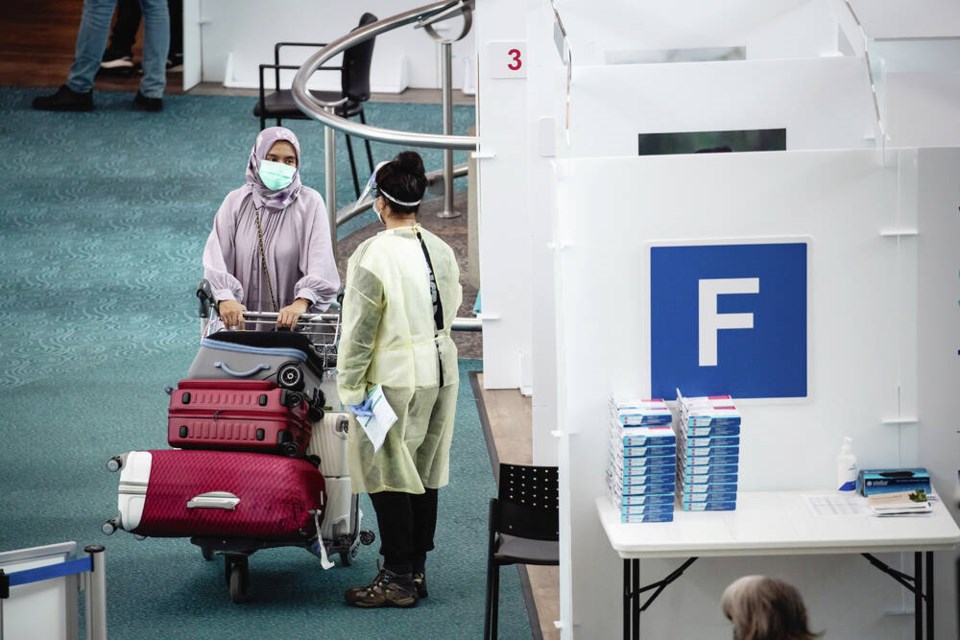Nature Boy was born in Europe, but he’s not an EU citizen.
The citizenship laws of the country where he was born require children born there to non-citizen parents to live their first 12 years in the country and formally declare their citizenship at that age.
Such requirements and variations on them are common, but Canada is more open. Under Canada’s Citizenship Act, which came into effect 75 years ago this week, being born in Canada automatically confers citizenship, regardless of the parents’ citizenship, status or residence.
That has caused concern here in B.C. in recent years. Over the past decade, the number of non-residents giving birth in B.C. has climbed. The province saw a 21.9 per cent increase in non-resident births between April 2019 and March 2020, when 868 non-residents of Canada paid to give birth in Lower Mainland hospitals, up from 712 non-residents in 2018.
Many of those births happened at Richmond Hospital. One of every four of the 2,094 births there in 2019-20 were to foreign nationals.
The rising trend led to concern and speculation about birth tourism. That is when non-Canadian expectant mothers visit Canada on tourist visas with the intent of giving birth here so their babies can receive Canadian citizenship without having to endure the usual immigration processes.
The trend has prompted petitions and calls on the federal government to change the Citizenship Act.
Then the pandemic arrived, and travel was restricted. That set up what Andrew Griffith, a former senior director at Citizenship and Immigration Canada, calls “a perfect natural experiment to assess the extent of birth tourism in Canada.”
Griffith has been analyzing birth-tourism- related data from the Canadian Institute for Health Information (CIHI) for several years, and reports on the data — and its limitations — for the Institute for Research on Public Policy.
According to his latest report, “non-resident self-pay” births declined by 57 per cent from April 2020 to March 2021 compared to the previous year. In 2020-21, 2,433 non-resident women gave birth in Canada, down from 5,698 in pre-pandemic 2019–20.
The CIHI collects information from hospitals across the country (but usually not those in Quebec) on who pays for procedures, including births. “Non-resident self-pay” procedures are not paid for by provincial health-care plans, which cover only official residents. “Residents” include, for example, Canadian citizens, permanent residents, some categories of temporary foreign workers, official refugees to Canada and, in many provinces, international students attending university under temporary study visas.
The provincial plans do not cover people in Canada on tourist and some other temporary visas, foreign diplomats and their families, nor people whose status in Canada is unresolved. These last include people awaiting their permanent residency status or those whose refugee claims haven’t been confirmed.
For expectant mothers in these non-covered categories, the costs to give birth at a Canadian hospital are paid out of pocket — hence “self-pay.”
The 2020-21 data help to separate the tourists — those entering Canada on tourist visas with the intent of giving birth here, then leaving shortly after — from other non-residents.
Griffith says that during the pandemic, “visitor visas issued declined by 95 per cent, compared with the proportion of international students, which declined by only 25 per cent (most provincial health plans cover international students), or temporary workers, which actually increased by 5.5 per cent. As Canadian citizens and permanent residents were largely exempt from COVID travel restrictions, the number who chose to return to Canada to give birth is likely unchanged.”
According to the CIHI data, the percentage of non-resident births fell from 1.6 per cent of total births in 2019 to 0.7 per cent in 2020. At the hospital level, non-resident births declined sharply in all hospitals, but Richmond Hospital saw one of the steepest declines.
This, Griffith says, suggests that the birth tourism in pre-pandemic years accounted for more than 55 per cent of the non-resident self-pay births reported by CIHI, and may do so again post-pandemic, when travel opens up again.
In the grand scheme, the overall percentage of tourism births is about one per cent of all births in Canada, or about 3,600 births across Canada in 2019-20, before COVID struck.
Whether or not Canada proceeds with re-examining its citizenship requirements for children born here to foreign nationals, there is now greater clarity on how many people might be actively taking advantage of the 75-year-old Citizenship Act.
keiran_monique@rocketmail.com



